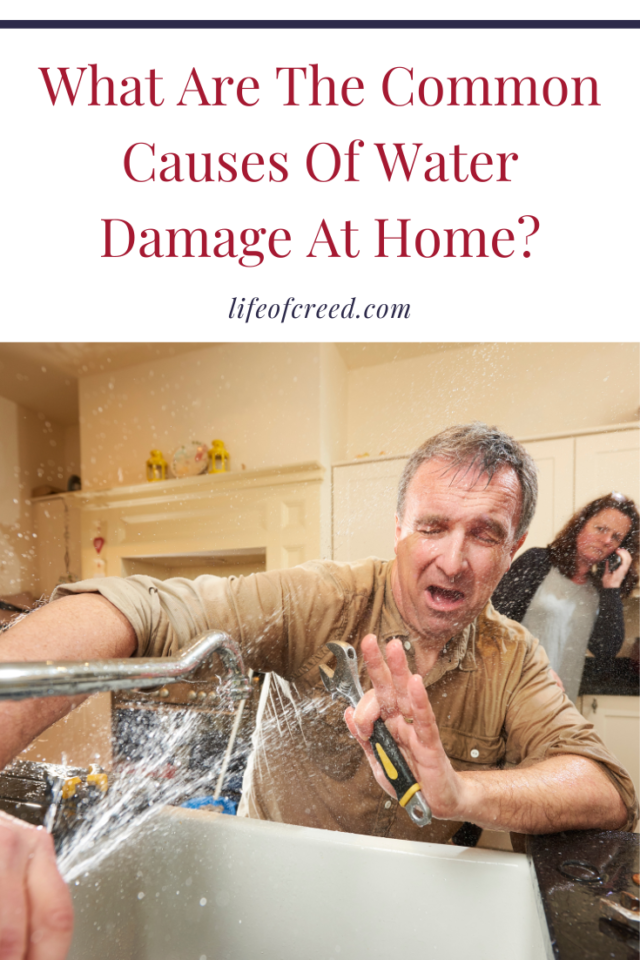The last thing any homeowner needs is to discover the home has extensive water damage! Fortunately, there are plenty of reliable, professional services that can help, such as 1-800 Water Damage, a company specializing in restoration for issues caused by water and other destructive elements.
But, as a homeowner, you want to be able to protect yourself and prevent damage from happening as best as you can. Therefore, it is crucial to understand where water damages come from. Spoiler alert: Some cases may be entirely out of your control. However, there are preventive measures you can take to protect your assets and your family.

Extreme natural disaster
Water damage caused by natural disasters means extreme weather. Unfortunately, climate change has created an unstoppable force that disrupts the elements in nature. So tsunamis, extreme rainfall, and violent storms are more prone to occur.
At an individual level, there is nothing you can do to stop natural disasters. Ideally, as a global population, we need to learn to minimize our carbon emissions to stop or reverse climate change. But, when it comes to protecting your home against disasters, positive results are unlikely to be seen soon enough. So, you want to check that your home insurance policy covers natural disasters. If it doesn’t, it is worth paying for the service if you live in a vulnerable region.
Your garden has an inclined surface
Slopes can look appealing, but they also drive the rainwater directly into your home. Therefore, in the event of heavy rain, you might find the most exposed parts of your property partially flooded. It can be helpful to measure the incline in your yard to make sure you can tackle the slope effectively. There are different landscaping structures available to manage a slope, such as creating stone walls, adding edged borders, and using terracing to cut through the yard. These ideas can help with minor slopes and create flat surfaces that can stop the water flow.
If you have a slope of 10 degrees or more, it may be worth reaching out to professional landscaping services to address the problem safely.
You have old plumbing
You’d assume that you can easily spot a water leak. In reality, water leaks in your plumbing system are often difficult to notice. Your pipes run through the walls and under the floor, which means that leaks can go unnoticed for a long period. Ideally, if you have an old plumbing system, you should consider checking for leaks and problems on a regular basis to avoid nasty surprises.
Signs of an invisible leak can include:
- Mold patches on walls, floors, and ceiling
- Increased humidity at home
- Wall paint or wallpaper peeling off in places
- Musty smell in some areas
- Some patches of the walls, floors, or ceilings feel abnormally cold to the touch
- Increased water bills if the leak has been running unnoticed for a long time
You have a damaged roof
Whether you’ve got a few roof slates missing or your under roof area has developed a fault, water can easily find a way through minor roof damages. Can you spot a roof leak? The answer is: Not necessarily. For instance, a minor leak may not lead to serious water infiltration through the home. However, your insulation system could absorb the water.
What does it mean in the long term? Wool-based insulation systems, foam boards, and insulated blankets are likely to retain the water. As a result, moisture develops underneath the roof, affecting the surrounding structure and attracting mold. It could weaken the overall structure of the house, even though you may never have spotted the leak.
How to prevent a roof leak:
- Plan yearly maintenance and check
- Use touch experiments, as the ceiling may feel cold to the touch
- Monitor moisture levels at home with a sensor
- Don’t leave roof damage unrepaired
Your appliances are old
There is nothing less reliable than an old washing machine or an old dishwasher. They can develop a sudden fault without any warning. You set the timer on and get on with your day, and when you come back in the evening, the kitchen or the laundry room is flooded with soapy water.
There is no real solution for old appliances, except perhaps getting them serviced regularly. If you noticed disparities in results, such as the dishwasher doesn’t wash the dirt away as well as it used to, it might be worth bringing in a technician and asking for an honest opinion. They might recommend upgrading to a new model, which will save you many troubles in the future!
Are you ready to protect your home and your family from water damage? Some of the most common causes are in your control, ranging from old systems to failure to keep up with maintenance work.
About the Author
Contributing Author
This article is written by a contributing author.
If you found this post useful, please Pin It!

Hi, before you go…
Don’t forget to join the email list!
Don’t forget to join in on the conversation on social media.![]()
![]()
![]()
![]()
![]()


